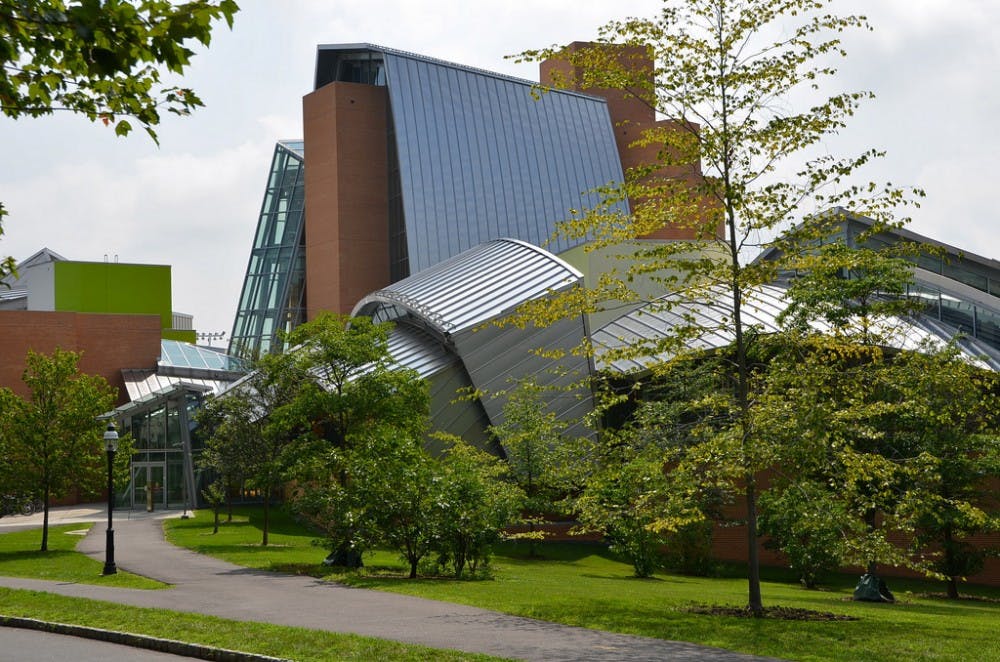In 1959, renowned novelist and physical chemist C.P. Snow delivered a lecture titled “The Two Cultures,” in which he highlights the widening rift between the sciences and the humanities (including art). Though often interpreted as a purely ad hominem attack on humanists and British elites, I believe Snow is arguing that balancing and blending knowledge of these two seemingly disparate realms is critical to understanding and improving the world.
In his recent op-ed for the ‘Prince’, senior molecular biology concentrator Gabe Lipkowitz decries the branding of scientific imagery as art, claiming broadly “there is no art of science.” In a rebuttal, guest contributor and neuroscience concentrator Varun Bhave correctly exposes several issues with Lipkowitz’s ill-formed and damaging argument, including the omission of perspective as a characteristic of art. However, Bhave does not explore the history of artistic and scientific collaboration or provide many concrete examples to illustrate his point, both of which I believe are critical to understanding this argument.
Before the advent of digital or even analog photography, science relied entirely on human artistic talent to capture the fine details of nature and human observation. Ecology uses intricate drawings of plants, animals, and environments, while anatomy uses charts to detail the structure of organisms. To this day, scientific illustrations contain much of the knowledge humans have of the natural world. The utility of illustration has been useful for capturing phenomena of incredibly large or extremely small scale, synthesizing information to create images of black holes, individual molecules, and other aspects of the world too extreme in size to be directly observed. Even in fields where computer-generated imagery has become the gold standard, scientific illustrations serve as important educational tools that can more easily emphasize specific features of, say, the structure of muscle or subtle changes in color between different types of cellular tissue. Thus, artists and scientists have collaboratively produced some of the most useful and inspired representations of the natural world, whether hand-drawn, painted, or computer-generated.
Computer-generated and digital images collectively seem to pose a problem for Lipkowitz. As Bhave points out, perhaps Lipkowitz objects wholesale to computer-generated images being cast as art, or to the supposed “literal copy” produced by digital imaging software. To the first point, I would bring up the example of 2014 sci-fi blockbuster “Interstellar,” for which physics Nobel-laureate Kip Thorne GS ’65 served as both story treatment writer and executive producer. Apart from Thorne’s insistence that the movie obey fundamental laws of physics, Thorne himself wrote rigorous equations and computer simulations that ultimately formed a depiction of the black hole Gargantua, widely recognized as the most scientifically accurate depiction of a black hole for mass audiences. Is this scientific and cinematic achievement not art?
To the second point, the idea that digital imagery is a “literal copy” of reality seems untenable when considered more broadly. Every image taken by a camera is in fact a limited piece of the whole puzzle; they are limited in frame, perspective, focus, wavelengths of light observed and rendered, and many more aspects. To reduce any part of reality to a still image, a video, or even all the data we can observe with the naked eye seems crudely reductionist and absurd. Moreover, for objects that cannot be observed directly, artistic license is necessary to gain visual representation. As a biologist, Lipkowitz must know that the cartoon representations of proteins so often used are reductions of a ball and stick atomic model, which itself is simply a limited view of the grand mathematical framework for electron orbital intersections which define every molecule in our body. Without art, scientists and others would have no way to visualize and understand the fundamental concepts which govern our daily lives, from the largest objects in the universe to the smallest subatomic particle.
Fundamentally, Lipkowitz’s objection to scientific art seems to hinge on its limitations and the restraints provided by adherence to known data and observations. Such limitation is not unique to scientific art; it is a feature of all art forms. Just as a writer is limited by the confines of language, so too is the painter by the interacting absorbance and emission of various pigments, the photographer by the shutter speed and zoom of a camera, and the architect by material properties and the physics of structural soundness. Though the products of human ingenuity are constantly expanding these boundaries, we should not pretend that art is somehow unfettered by limits while science is forced to play by the rules; both disciplines are limited, but this does not decrease their beauty.
The “holier-than-thou” attitude adopted by scientists and artists who insist on enforcing strict separation between their fields damages both fields individually and serves to widen the large gap between them. Instead of insisting on art and science as irreconcilable forms, we should follow the legacy of Snow and others in seeking to combine these fields to expand our understanding of the universe and its inhabitants. That is, in fact, one goal that both art and science have in common: to discover all the ways in which complex ideas and information interact to showcase something new about this world we share.
Sam Garfinkle is a senior chemistry concentrator and former managing editor for the ‘Prince’ from Rochester Hills, MI. He can be reached at samueleg@princeton.edu.








